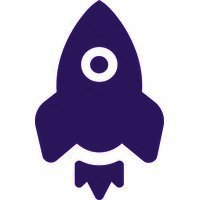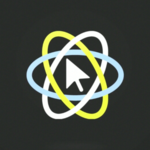Absolutely! Most product analytics software is designed to be accessed and used on a variety of devices and platforms. This enables customers to effortlessly access and analyze data from their desktop, laptop, tablet, and mobile devices. Whether you're using a Mac or a PC, iOS or Android, you can quickly access and analyze your product data from anywhere. This makes product analytics software an adaptable tool for monitoring and optimizing your products' performance.
List of Best Product Analytics Software
Quantum Metric is a digital analytics platform that empowers businesses to swiftly pinpoint and resolve user experience obstacles. Powered by AI, our solution enables organizations to identify revenue gaps and improve their online performance in real...Read More Quantum Metric
Adobe Analytics is data analysis tool designed to simplify the process of data comprehension and decision-making. Featuring an intuitive interface and seamless navigation, this software offers an array of advanced features and visually engaging displ...Read More Adobe Analytics
Kepicker is a Amazon sellers analytics solution. Our cutting-edge platform features a robust Asin Extractor, Asin SPY, Marketplace Comparison, and stock insights in real-time to improve your product analysis and increase profits. Stay ahead of the co...Read More Kepicker
Shazarch - the perfect software to take your projects to the next level with customized AI-powered applications. From chatbots to recommendation systems, Shazarch offers cutting-edge tools for a seamless and personalized experience. Empower your busi...Read More Shazarch
Palzin Track solution for product analytics and real-time event tracking. With Palzin Track, you can effortlessly monitor crucial metrics like User Journey, Insights, Activation, Acquisition analysis, Cohorts, Customer Journey, Adoption rate and more...Read More Palzin Track
Gainsight PX is Customer Success platform that enables businesses to improve customer retention, drive growth, and increase user adoption. Through advanced features such as 360-degree customer views, automated best practices, and in-app engagements,...Read More Gainsight PX
Sherlock - an innovative CRM solution that revolutionizes the way sales and customer service teams utilize product data. Our user-friendly metrics boost CRM efficiency, while automated processes create a seamless Product-Qualified Lead system. Priori...Read More Sherlock
LogRocket solution for developers and product teams looking to elevate user experience and enhance application performance. Our powerful platform combines session replay, AI error tracking, and performance monitoring to pinpoint and solve issues, boo...Read More LogRocket
Auryc, in partnership with Heap, is analytics tool that enhances user experience through a unique combination of session replay and voice of the customer features. With seamless integration, Auryc offers valuable insights into user behavior and ident...Read More Auryc
Experience the ultimate digital analytics solution with Mouseflow, a trusted platform utilized by 210,000 satisfied users. Easily track user behavior in real-time and access valuable insights such as friction scores, form analytics, and triggered sur...Read More Mouseflow
FullStory is a customer experience software that revolutionizes digital experiences and drives growth by retaining customers. Offering unmatched support, FullStory equips businesses with a comprehensive understanding of customer struggles through pow...Read More FullStory
Pendo.io is a platform designed to help businesses prioritize their product experiences and boost digital adoption. It empowers companies to deliver exceptional digital experiences to their customers, from efficient onboarding to interactive guided e...Read More Pendo.io
Glassbox, the must-have solution for gaining valuable insights into customer behavior and enhancing online experiences. With cutting-edge AI technology and real-time data capture, easily turn customer interactions into actionable tactics for driving...Read More Glassbox
Heap is a digital insights platform designed to seamlessly monitor all user interactions. With comprehensive data tracking, gain unparalleled visibility and actionable information to boost conversion rates, enhance customer retention, and improve ove...Read More Heap
Indicative is a analytics solution for teams looking to understand customer behavior, enhance user experiences, and boost retention rates. With its easy integration and real-time data tracking, Indicative streamlines the process of converting data in...Read More Indicative
Amplitude Analytics is a software renowned for its superior performance across various applications. Trusted for its accuracy and dependability, it provides businesses with precise insights to drive data-based decisions and optimize strategies. With...Read More Amplitude Analytics
Endgame the AI-powered account research tool that transforms your sales process. With a unified interface, Endgame seamlessly integrates calls, emails, LinkedIn, news, and web data to provide comprehensive insights for your key accounts and stakehold...Read More Endgame
Fibotalk is a user engagement platform for SaaS, E-commerce, and Fintech web and mobile applications. Easily track user and critical events, product usage, and feature adoption with Fibotalks streamlined approach. Say goodbye to complicated engineeri...Read More Fibotalk
June - the leading product analytics solution designed specifically for B2B SaaS companies. With its intuitive interface and seamless integrations, June offers streamlined setup and in-depth reports to analyze user behavior, reduce churn, and identif...Read More June
PostHog solution for product analytics, A/B testing, and feature management. Our all-in-one platform provides developers with robust tools for data analysis, user feedback, and seamless feature deployment. Eliminate the complexity of managing multipl...Read More PostHog
Learn More About Product Analytics Software
- What Is Product Analytics Software?
- What Are The Recent Trends In Product Analytics Software?
- Benefits Of Using Product Analytics Software
- Important Factors To Consider While Purchasing Product Analytics Software?
- What Are The Key Features To Look For In Product Analytics Software?
- Why Do Businesses Need Product Analytics Software?
- How Much Time Is Required To Implement Product Analytics Software?
- What Is The Level Of Customization Available In Product Analytics Software?
- Which Industries Can Benefit The Most From Product Analytics Software?
- Conclusion
What Is Product Analytics Software?
Product Analytics Software is a sophisticated tool that allows organizations to track and analyze the success of their products. It is an indispensable tool for businesses seeking to make informed decisions and gain a competitive advantage in today's market. This software collects and analyzes data from customer contacts, sales, and product usage, giving firms important insights into their product's performance.
It enables organizations to better analyze customer behavior, identify areas for improvement, and make data-driven decisions to optimize their products for success. Product Analytics Software enables firms to track indicators such as product uptake, engagement, retention, and churn rates. They can also track how product upgrades and adjustments affect their overall performance.
This enables organizations to make real-time adjustments to their product strategy and remain relevant in an ever-changing market. Another important feature of Product Analytics Software is the capacity to segment and analyze data. This enables firms to spot trends and patterns across different customer categories, resulting in more personalized and focused marketing efforts.
It also helps them understand their consumers' requirements and preferences, resulting in higher overall customer satisfaction and loyalty. Product Analytics Software includes user-friendly dashboards and visualizations, making it simple for organizations to comprehend and present data. It also works with other tools and platforms to provide a comprehensive view of product performance and the customer journey.
What Are The Recent Trends In Product Analytics Software?
In recent years, the use of product analytics software has grown dramatically as organizations strive to acquire a competitive advantage in the market. This expansion has resulted in various breakthroughs and trends in the field of product analytics software, which should be considered when making a purchase decision. To begin, artificial intelligence (AI) and machine learning (ML) are increasingly being integrated into product analytics software.
This enables more accurate and timely insights about consumer behavior, market trends, and product performance. Businesses may use AI and machine learning to make data-driven decisions that increase revenue and customer happiness. Second, there has been a shift toward cloud-based product analytics software, which is more accessible and cost-effective for companies of all sizes.
This tendency also facilitates collaboration and the sharing of insights among team members, resulting in more efficient and effective decision making. Another trend in product analytics software is the use of customer journey mapping, which depicts how customers interact with a product. This allows organizations to discover pain points and make changes to improve the overall consumer experience.The relevance of user-friendly and customisable dashboards has also increased.
These dashboards enable businesses to measure data and KPIs particular to their product and sector, resulting in a more specialized and comprehensive view of product performance. Finally, there has been a greater emphasis on predictive analytics in product analysis tools. This enables organizations to forecast and predict future trends and consumer behavior, allowing them to proactively adjust their product plans.
Benefits Of Using Product Analytics Software
Product analytics software is a strong tool that allows organizations to acquire vital information about their products, consumers, and overall performance. Companies can use this software to make data-driven decisions that will lead to better products and more money.
Let's explore, we'll look at the primary advantages of adopting product analytics software and how it may assist organizations of all sizes.
1. Deep Insight Of Client Behavior: One of the most important advantages of adopting product analytics software is the ability to track and analyze consumer behavior. This includes their engagements with the product, like as clicks, page visits, and transactions. Businesses can find patterns, preferences, and pain issues by learning more about how their customers use the product. This knowledge can then be used to improve the product, resulting in a better user experience and increased customer satisfaction.
2. Real-Time Data And Insights: Product analytics software delivers real-time data and insights, allowing firms to make informed decisions rapidly. This is especially handy for introducing a new product or updating an old one. Companies can use real-time data to see which features are doing effectively and which need to be improved. This allows businesses to prioritize activities and deploy resources more efficiently, resulting in faster product creation and a competitive advantage in the market.
3. Identify Areas Of Improvement: No product is flawless; there is always space for improvement. Product analytics software can assist firms in identifying these areas by highlighting where users are struggling or experiencing problems. Addressing these pain points allows businesses to improve the entire user experience and retain more customers. Furthermore, product analytics software enables firms to collect input from users, promoting ongoing improvement and innovation.
4. Evaluate Product Success And ROI: Product analytics software enables firms to track and measure product success and return on investment (ROI). Companies can review product performance and determine its influence on the bottom line by tracking important indicators such as conversion rates, churn rate, and customer lifetime value. This information is critical for making data-driven business choices, allocating resources, and setting objectives for future product development.
5. Competitive Analysis: In today's very competitive market, keeping an eye on your competition is critical. Product analytics software can collect data about competing products and analyze their features, performance, and consumer feedback. This information is useful for benchmarking, discovering market gaps, and staying ahead of competitors.
Important Factors To Consider While Purchasing Product Analytics Software?
When it comes to selecting the best product analytics software for your company, there are various variables to consider.
These elements will influence not just the effectiveness and efficiency of your analytics, but also the entire performance of your company.
1. Understanding Your Business's Needs :Understanding your business's requirements is the first step in picking product analytics software. What do you hope to achieve with the software? Do you require it for marketing research, product creation, or sales analysis? Clearly outlining your objectives can help you limit down your selections and select the best software.
2. Features And Functions: Different product analytics software provides a variety of features and functions. It is critical to carefully assess each software's features and identify which ones are critical to your organization. Common features to check for include data visualization, trend analysis, and A/B testing.
3. Compatibility And Integration: Your product analytics software should work with your current tools and systems. It's critical to evaluate how the software will work with your website, CRM, and other key platforms. This will ensure a smooth transmission of data and streamline your analytics process.
4. User Friendliness: The last thing you want to do is invest in product analytics software that is unnecessarily complex and difficult to operate. Look for software with an easy-to-use interface, straightforward navigation, and data management capabilities. This will save you time and money on training and mastering the program.
5. Scalability And Flexibility: As your company grows, so will the demand for more advanced analytics. It is critical to select product analytics software that is scalable and can meet your future requirements. Consider software that has flexible pricing levels, allowing you to upgrade or downgrade as needed.
6. Data Security And Privacy: Your product analytics data is precious and sensitive, so it is critical to evaluate the security and privacy features of the software you select. Look for software that has encryption, data backup, and other security features to keep your data safe from cyber attacks.
7. Customer Support And Training: Even the most user-friendly software may require technical assistance or training. Look for a software vendor who provides dependable customer assistance and tools, such as tutorials and training sessions, to help you get the most out of your product analytics tool.
What Are The Key Features To Look For In Product Analytics Software?
When it comes to choosing the best product analytics software for your company, there are numerous crucial things to look for. These capabilities can considerably improve the software's effectiveness and efficiency, allowing you to make more informed judgments about your items.
Here are the main features to consider while selecting a product analytics software.
1. Real-Time Data Tracking: Product analytics software should allow you to track user behavior and product performance in real time. This tool allows you to make data-driven decisions quickly and keep track of any changes in user behavior.
2. Customized Reports And Dashboards: Look for product analytics software that can provide customized reports and dashboards based on your individual requirements. These reports and dashboards should provide extensive insights into critical metrics like conversion rates, attrition rates, and user engagement, enabling you to make data-driven product decisions.
3. Advanced Segmentation: Knowing how to segment data is critical for understanding your consumers' behavior and preferences. Look for product analytics software with strong segmentation options, which allow you to split down data based on demographics, location, and user behavior.
4. Event Monitoring: Event monitoring allows you to track specific activities or events within your product, which gives you a better insight of how people interact with it. A decent product analytics software should allow you to create and track custom events that provide useful insights into user behavior.
5. User Funnels: Funnels are a critical component of product analytics software, allowing you to visualize and evaluate how users go through different phases of your product. Look for software that allows you to create customizable funnels so you can easily track and optimize your conversion rates.
6. Integration With Third-Party Products: Look for product analytics software that simply interacts with the various products and platforms you use. This provides for a smooth flow of data, making it easier to assess and comprehend your product's performance.
7. A/B Testing: A/B testing is an important function to include in your product analytics software. It enables you to test several versions of your product and decide which one works best, allowing you to make data-driven decisions about feature upgrades and improvements.
8. Mobile Analytics: With the increase in mobile usage, having product analytics software that can track and evaluate mobile app usage is critical. Make sure to select software that includes comprehensive mobile analytics features, allowing you to understand and optimize your mobile experience.
9. Machine Learning Capabilities: Some product analytics software use machine learning algorithms to generate enhanced insights and forecasts. This functionality can be quite useful for recognizing patterns and trends in user behavior, allowing you to make better informed product decisions.
10. User Assistance And Training: Finally, think about the degree of user assistance and training offered by the product analytics software. Look for software that provides extensive support and training resources, ensuring that you can use the product efficiently and make the most of its capabilities.
Why Do Businesses Need Product Analytics Software?
Businesses require product analytics software to get important insights about their products and customers. This type of software enables organizations to understand how their goods are utilized, find areas for improvement, and make data-driven decisions to boost sales and customer happiness. First and foremost, product analytics software helps firms gain a thorough understanding of how their goods work.
It collects and analyzes data on sales, usage, and consumer feedback to identify patterns and trends. Businesses can make more informed judgments about inventory and product development if they know which products sell well and which do not. Furthermore, product analytics software helps organizations better understand their customers.
It analyzes customer behavior, preferences, and demographics to assist businesses in identifying their target audience, understanding their needs, and personalizing their products and marketing methods. This not only improves client happiness but also allows firms to recruit and keep loyal customers. Furthermore, product analytics software assists organizations in identifying product improvement opportunities.
Businesses can use in-depth analysis to find variables that contribute to low sales, identify product feature gaps, and make data-driven enhancements. This eventually leads to more successful products and improved consumer experiences. Furthermore, product analytics software gives real-time data, enabling organizations to make timely and correct decisions. To remain competitive in today's fast-paced market, firms must keep track of the performance of their products.
Product analytics software gives organizations a complete and real-time perspective of their products, allowing them to make timely changes and capitalize on opportunities. Overall, product analytics software is an essential tool for companies seeking to succeed in today's market. It provides a comprehensive perspective of their products and consumers, which helps in decision-making and, ultimately, leads to increased sales and customer satisfaction. Businesses that invest in this software might get a competitive advantage and keep up with the ever-changing industry.
How Much Time Is Required To Implement Product Analytics Software?
The time required to implement product analytics software varies based on the program and your business's demands. In general, the implementation process might last from a few weeks to several months, depending on the software's complexity and the resources available.
The first step in deploying product analytics software is to select the appropriate software for your organization. This can include studying various software solutions, analyzing their features and capabilities, and deciding which one best fits your company's goals and needs. Once the program has been chosen, the next step is to configure it and link it with your existing data sources.
This may entail linking the program to your website or mobile app, as well as any other relevant data sources such as CRM systems or customer databases. The next step is to setup the program to track the metrics and KPIs that are essential to your business. This can include creating bespoke dashboards and reports, as well as establishing rules and triggers for data collecting and alerts. Finally, before releasing the software, the data should be extensively tested and validated to verify accuracy and reliability.
This step may take more time and resources, but it is critical to guaranteeing the success of the product analytics software deployment. Overall, the time required to develop product analytics software varies according to the project's complexity and scale. To guarantee that the software is successfully and efficiently integrated into your organization, the implementation process must be carefully planned and resourced.
What Is The Level Of Customization Available In Product Analytics Software?
When it comes to product analytics software, personalization is an important factor to consider. Every organization has unique objectives and goals, so a one-size-fits-all solution may not deliver the most valuable insights. This is where the level of flexibility offered in product analytics software is critical. The level of customisation in product analytics software refers to the capacity to adjust the software to a company's specific needs and preferences.
This includes the option to specify which data to track, how it is presented, and how it can be analyzed. With a high level of customization, businesses can receive more relevant and actionable insights. Most product analytics software provides a variety of customization possibilities, such as custom metrics and filters, bespoke dashboards, and data visualizations.
Some advanced software also supports bespoke event tracking and segmentation, allowing organizations to follow and analyze user activity on a more detailed level. Furthermore, the extent of customization varies depending on the software being used. Self-hosted software, for example, typically allows for more customisation than cloud-based alternatives. This is because self-hosted software gives you more control and access to the underlying data.
When choosing product analytics software, you must examine the level of customisation offered. A highly customizable program not only meets a company's individual needs, but it also allows organizations to make data-driven decisions that are aligned with their own goals. As a result, before making a decision, carefully consider the level of customisation provided by various software options to ensure that it matches the needs of your organization.
Which Industries Can Benefit The Most From Product Analytics Software?
Product analytics software is a sophisticated tool that can provide useful information about product performance and customer behavior. This software's ability to track, analyze, and understand data can greatly help firms in a variety of industries. However, some businesses will benefit more significantly from adopting product analytics software into their processes.
Let's explore, we'll look at which industries can benefit most from product analytics software and why.
1. E-commerce: In the fiercely competitive e-commerce market, understanding customer behavior and preferences is critical to success. Product analytics software can provide e-commerce enterprises with detailed information into customer purchasing patterns, product popularity, and performance. This data can be utilized to optimize product offers, improve client targeting, and increase revenue.
2. Retail: Similar to e-commerce, the retail industry can use product analytics software to acquire insights into customer behavior and preferences. With the capacity to evaluate data from point-of-sale systems, inventory systems, and customer contacts, merchants may acquire a thorough picture of their product performance and make educated growth decisions.
3. Technology: Product analytics software can provide significant benefits to technology organizations, particularly those in the SaaS (Software as a Service) industry. These companies frequently have a large user base and a sophisticated product portfolio. Product analytics software can assist businesses in analyzing client usage patterns, identifying areas for development, and improving their product offerings to more effectively satisfy customer needs.
4. Healthcare: The healthcare business is aggressively integrating technology to expedite processes, improve patient care, and cut costs. Product analytics software can help healthcare firms monitor product performance, optimize patient experiences, and find areas for process improvement.
5. Marketing: Product analytics software can help marketing departments across industries. This software may help marketers analyze the impact of their efforts, track customer interaction, and make data-driven decisions to improve their strategy and increase ROI.
6. Gaming: The gaming business collects massive amounts of data from its players. Gaming companies can use product analytics software to evaluate this data and acquire a better understanding of user behavior, preferences, and engagement levels. This information can be used to enhance the gaming experience and boost player retention.
Conclusion
To summarize, investing in product analytics software is a critical decision for any company seeking to optimize processes and drive growth. With so many options available on the market, it might be difficult to find the correct one. However, you may make an informed decision by assessing your individual requirements, budget, and knowing the features provided by each product.
Begin by determining the main KPIs and data points required for your business objectives. This will allow you to narrow down the software solutions that provide the precise capabilities you require. Furthermore, assess the software's scalability and integration capabilities to guarantee it can expand with your company and interface effortlessly with your existing systems.
Next, take advantage of free trials and demos provided by various software vendors to gain hands-on experience and assess the usability and usefulness of each alternative. This also allows you to ask inquiries and clear any doubts before making a final decision. Finally, think about the pricing structure and value for money provided by each software. Keep in mind that a high price does not always imply the greatest product, and a lower price does not always imply a reduction in quality.
Look for software that provides the functionality and support you require at an affordable cost. We hope our buyer's guide has provided you with useful information and considerations to help you make an informed decision about the best product analytics software for your company. By carefully examining your requirements and investigating the various possibilities, you can select software that will effectively propel your organization forward while also providing useful insights for future growth.
Product Analytics Software FAQ's
Can Product Analytics Software Be Accessed Across Multiple Devices And Platforms?
Is Product Analytics Software Future-Proof And Adaptable To Emerging Technologies Like AI, Blockchain Or IoT?
Product analytics software is continually evolving to keep up with emerging technologies such as artificial intelligence, blockchain, and the Internet of Things. It is intended to be future-proof and adaptable to new technologies, enabling firms to stay ahead of the competition. Product analytics software, with its capacity to analyze data from several sources and deliver valuable insights, is a must-have tool for firms trying to flourish in the ever-changing tech market.
Is There A Free Trial Offered To Assess Product Analytics Software Before Committing?
Yes, many product analytics software companies provide a free trial period to allow potential customers to evaluate the software before committing. This enables organizations to investigate the features and capabilities of the product analytics software and assess whether it satisfies their specific requirements and objectives. It is recommended that you use free trials to make an informed selection and confirm that the software is a good fit for your organization.
Does Product Analytics Software Offer Data Security Features And Meet Regulatory Compliance Standards?
Yes, most product analytics software prioritizes data security and generally includes a variety of measures to protect sensitive data. This can include data encryption, access controls, and strong data storage techniques. Furthermore, many product analytics software complies with applicable regulatory standards such as GDPR and CCPA. This ensures that your data is managed in line with industry rules, giving you piece of mind while reducing potential dangers.
Can Product Analytics Software Integrate Seamlessly With Existing Tools And Platforms?
"Yes, most product analytics software is designed to integrate seamlessly with existing tools and platforms." This enables a unified and comprehensive analysis of product data from several sources, resulting in deeper insights and a more complete picture of client behavior. The integration procedure is usually quick and user-friendly, allowing organizations to combine data from several channels and systems into a single centralized dashboard."






















